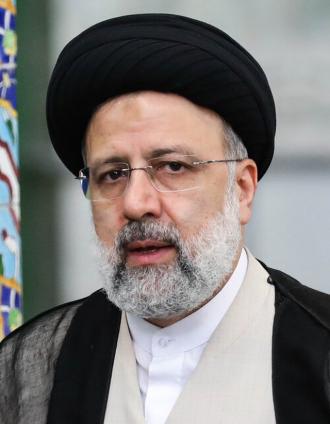Tel Aviv - Irrespective of the global deal over the Iranian nuclear program, the Israel Air Force goes on building its long-range capabilities, and maintaining its readiness for any potential future scenario that may develop between Israel and the Islamic Republic.
The effort is overseen by the IAF’s Air Operations, established in the midst of Operation Protective Edge in 2014, as the body responsible for activating and building up Israeli air power.
Air Operations is the recently- established headquarters responsible for how the air force operates, drawing up and carrying out offensive and defensive missions, processing threat alerts, using intelligence to build up strike plans, and many other crucial IAF activities.
It replaced a 40-year-old IAF command structure that a senior military source described as having been incapable of managing the air force’s modern and many roles.
“Hezbollah in Lebanon remains the main threat,” a senior military source said.
“That’s where things are happening that we may not fully grasp. If a third Lebanon war breaks out, we may not fully be aware of the scope and intensity of that event. Hezbollah in the north is the main thing,” the source told The Jerusalem Post on Thursday.
But Iran remains a very significant potential theater in the future, he said.
Despite the historic nuclear agreement last year, “We always have to be ready. Iran heads an axis that threatens Israel. Who said that on the twelfth day of a [potential] war with Hezbollah, we won’t get an order from the prime minister to punish Iran [which sponsors and arms Hezbollah]?” Iran could build its confidence over the next three to five years, and then, in eight to 10 years, it could “lift its heads” and seek a nuclear breakout capability, the source said.
Meanwhile, Iran still “nourishes” the area with malicious terrorism and weapons, the source added.
“The IAF and Military Intelligence have to be ready,” he said.
The source agreed to provide general descriptions of the IAF’s war between wars – a covert effort to disrupt enemies’ ongoing attempts to build up offensive capabilities, particularly surface-to-surface projectiles, of which Hezbollah in southern Lebanon has some 100,000.
The source described “low-intensity, low profile actions, occurring 24-7.” The IAF must carefully maneuver in busy airspace to the north, filled with Russian and American air platforms, and ensure it is not vulnerable to any surface to air missiles, as it monitors, and, according to international media reports, disrupts weapons trafficking to Hezbollah.
“What could Iranian weapons industries pour into the area in the future?” the source remarked, noting that the Islamic Revolutionary Guards Corps’ elite Quds Force run the smuggling networks.
Meanwhile, to the South, the IAF has committed itself to reaching any underground bunker Hamas has dug. “There is no such thing as ‘No we can’t,” there is only ‘I don’t want to,’” said the source.
“We can reach as deeply as necessary. We are working with Southern Command on this.”
The Air Operations group must also plan and prepare for the scenario of a multi-front war, in which a “stretching” of forces between northern and southern fronts could occur.
Without discussing operational details, the source said the new approach is based on hitting the most critical enemy targets first, rather than trying to hit everything simultaneously.
“We have to prevent the enemy from achieving an early ‘victory picture,’” said the source.
Meanwhile, the IAF is building up its ability to strike thousands of targets per 24 hours, at rates previously unseen in any regional battlefields.
Intelligence, which the Air Operations group handles each day, forms a vital component in all such preparations.
The IAF had less than 170 Hezbollah targets on the eve of the 2006 Second Lebanon War, but “today, we have intimate knowledge of thousands of targets. We are building a mass strike machine,” the source said.
Addressing the potential future threat of ISIS, the source compared Israel’s situation to someone sitting “on the edge of a swamp, with a leg that could be sucked in, but hasn’t yet. In the swamp are two figures fighting. Israel is ready on the side, with its combat suit and tools, for the day the order comes. We had better be on the alert. If the figure emerges from the swamp and comes at us, we will defend ourselves, but that means hitting deep [inside enemy territory].”
The arrival of F-35 stealth fighter jets this year is a “huge event” for the IAF, the source said. The first crews who will set up the squadron are already asking what missions they will have, “Because it’s clear that a minute after the F-35 arrives, we’ll activate it operationally,” if not for strikes, then for advanced intelligence gathering.
He praised the decision to acquire the jet, which was based on understanding that Israel’s enemies, as well as its neighbors, are “rapidly building up their force.”
In the chaotic and unpredictable region, even friendly states could turn against Israel in the future, and some are armed the most advanced Western military hardware.
In the meantime, Air Operations is overseeing the daily war between wars, which is divided into a number of subgroups.
The effort involves crossbranch cooperation, such as naval and Military Intelligence integration.
Air Operations also carries out the role of synchronizing offensive and defensive capabilities.
In addition to deciding where to deploy air defense systems like Arrow-3, Iron Dome, and David’s Sling, it also must factor in the level of air defense around each Israeli region before deciding how much offense it should apply in the event of a conflict.
Air Operations is responsible for the tactical and national detection radars that feed the Home Front Command’s alert systems, and it has command of all interception missions against incoming aerial threats, whether plane, missile or drone.
Air Operations’ Cooperation Branch is the body that works with others, like the Shin Bet and the IDF’s regional divisions in the North and South, to coordinate activities.
“Every military activity today involves us,” the source said. “A territorial division can’t launch an operation without us being on stand-by first.”
Should Air Operations detect an imminent attack by an ISIS-affiliate in Syria, it will be responsible for ordering responses, and choosing to send in combat helicopters, drones, or utilize other forces.
Daily intelligence reports pour in to the Air Operations headquarters, and strike plans for every conceivable situation are drawn up.
A formation of four IAF fighter jets scrambled to a mission is under the direct command of Air Operations, and at any time, the air force chief himself can walk in to the control room and communicate directly with the lead jet’s cockpit.
Air Operations oversees hundreds of platforms, and thousands of potential battle orders.
The IAF is highly disturbed by cyber threats, and has invested huge resources in building cyber defenses.
At the end of 2016, the Air Operations control room will move to a new location, which the source described as “more survivable,” and equipped with technological upgrades.















